The fjords of Norway’s western coast are among the most stunning natural wonders in the world. These vast bays and inlets, once safe havens for Viking raiders, now draw tourists from around the globe to explore their rugged beauty. The impact of the ice age is apparent in Norway’s towering mountains, thundering waterfalls, and dense forests.
Located in northern Europe, west of the Scandinavian Peninsula, Norway is a year-round travel destination. Despite a third of its landmass lying above the Arctic Circle, outdoor activities like hiking and mountain biking flourish during the summer, while skiing and other winter sports thrive in the colder months.
Ranked among the best places to live in the world for its high-quality infrastructure and services, Norway’s capital city of Oslo blends historic sites with modern architecture in a beautiful harmony.
Norway, once home to the Vikings, boasts icy tundra, chic cities, and a long coastline that features some of the most breathtaking natural wonders on Earth. Travelers to Norway can enjoy the awe-inspiring beauty of the northern lights or the summer sun sparkling on a glacier. They can witness polar bears and walruses in Svalbard, go whale watching in Troms, or experience the country’s best hiking, cycling, and skiing.
Winter in Norway may feature shorter daylight hours, but its cities brim with stylish sophistication and energetic vibrancy. Trondheim encapsulates the country’s historical side, Bergen offers beautiful wooden houses, and the fashionable capital of Oslo provides easygoing living, city parks, and exciting restaurants.
Come explore Norway’s welcoming culture and stunning natural beauty for yourself. Listed below are some of Norway’s top attractions:
17. Alta
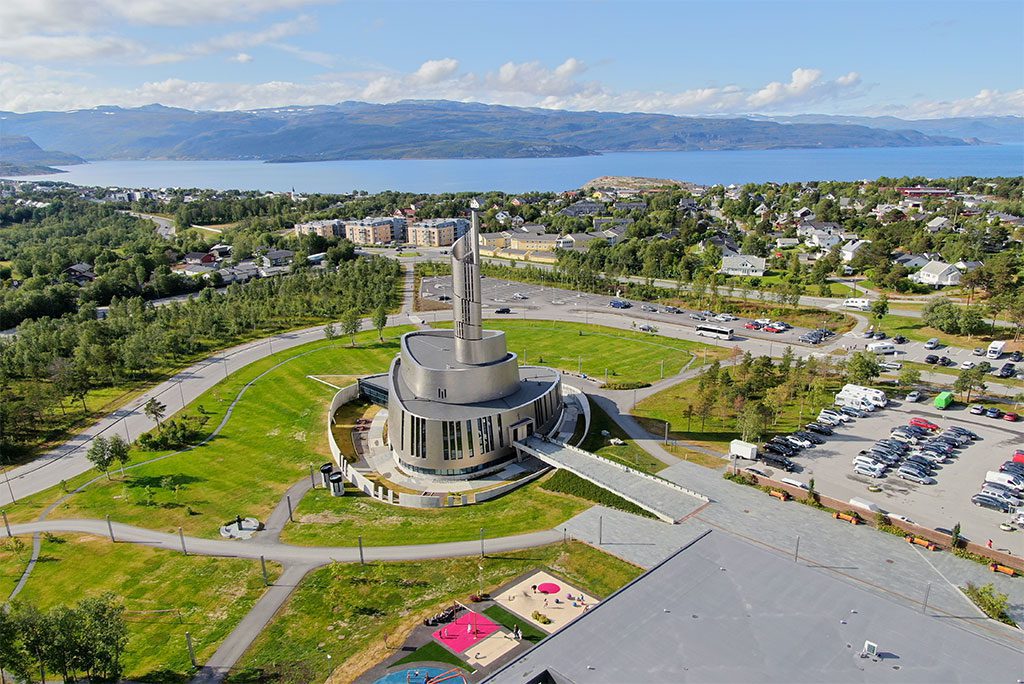
Alta, one of the northernmost cities in the world, is located in Norway’s Arctic north, just above the Arctic Circle. The beautiful location on the edge of a fjord has made it a popular destination for those seeking to get a glimpse of the Northern Lights. The polar lights often create a hypnotic kaleidoscope of color in the night sky.
Although this natural light show is a big draw for tourists to Alta, the city also offers a lot of other noteworthy attractions. The Northern Lights Cathedral, with its bold and unique style, and the wonderful museum housing ancient rock carvings are only two examples. In addition, Alta is surrounded by beautiful landscapes and breathtaking scenery, which are especially picturesque when blanketed in fresh snow. Cross-country skiing, kayaking, and mountain biking are all popular in Alta due to the area’s stunning natural scenery, and visitors shouldn’t leave without seeing the dazzling Aurora Borealis
16. Arendal
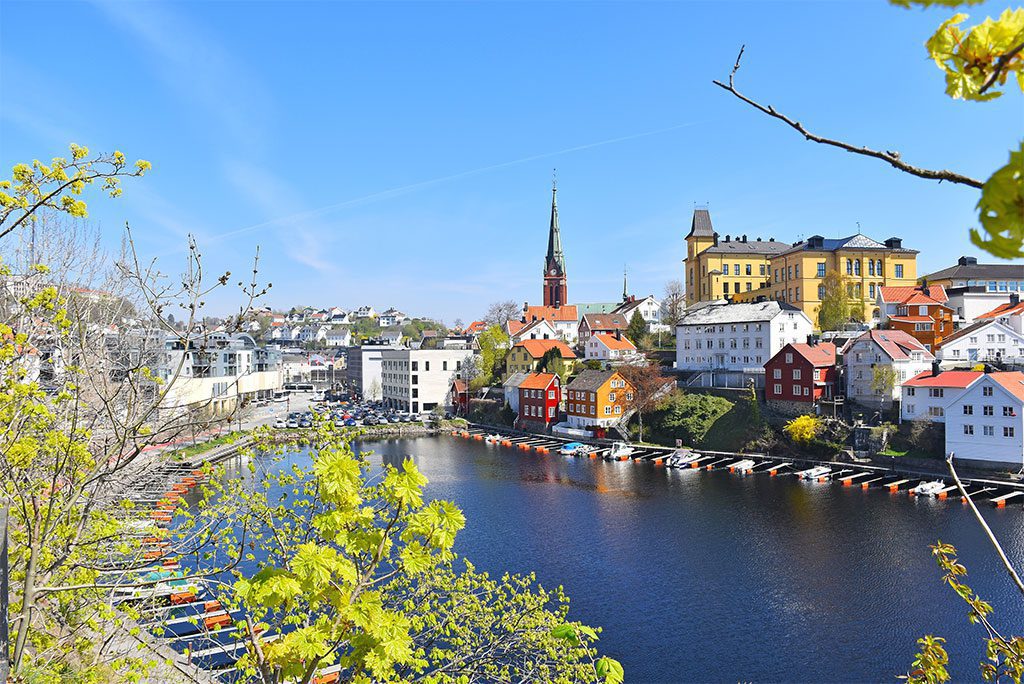
Arendal, situated on Norway’s beautiful southeast coast, is a great destination to spend a summer vacation. Travelers flock to the city at this time to take in the sights and enjoy the many festivals and concerts that take place during this time.
In and around the waterfront and dock in the heart of the city are historic structures that have stood the test of time, including churches that date back centuries. Cozy cottages and wooden houses are close to harborside cafés and outdoor restaurants and bars, creating a really picturesque scene.
Arendal is known for its great fish market and intriguing city history museum, in addition to the historic areas of Tyholmen and Pollen. Ferries depart often from its port, allowing easy access to the nearby islands of Hisoy, Merdo, and Tromoy, all of which include picturesque landscapes.
15. Nordkapp
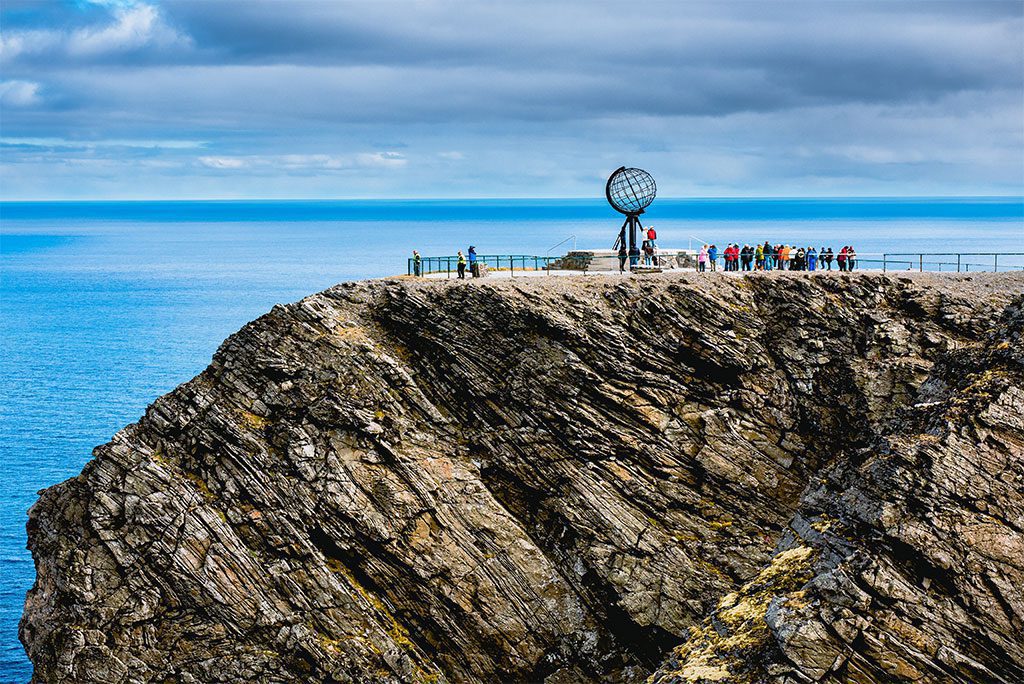
Nordkapp, the point of Norway that juts out into the Arctic Ocean, has been a tourist mecca for generations. The high coastal cliff on the island of Mageroya is marketed as the northernmost point of mainland Europe, despite being closer to the North Pole than Oslo.
Visitors have been drawn to the rugged and remote location of the high plateau, with its stunning views over the ocean, for generations. The Sami originally utilized the conspicuous point as a sacrificial site, and it has been visited by the Kings of Norway and Sweden as well as Kaiser Wilhelm II of Germany. These days, tour buses full of sightseers go to the North Cape to take in the breathtaking scenery. The cliff’s natural beauty makes it well worth a visit, despite the crowds that might often be present, especially in the summer.
The municipality is also known as Nordkapp. Honningsvag is where you’ll go to schedule trips to the island’s breathtaking cliffs, as well as hiking and birdwatching trips around the island’s beautiful surroundings.
14. Roros
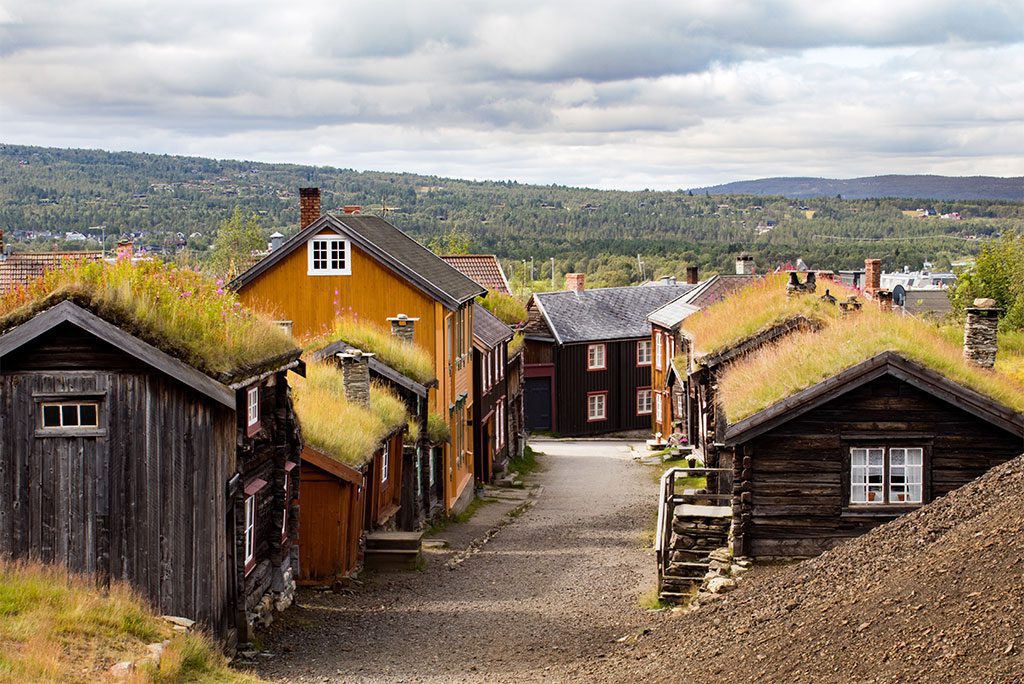
The old mining town of Roros in Trondelag County is located in the country’s east, on a plateau surrounded by dense forests. In addition to its rich mining history, the town’s lovely atmosphere stems from its many old wooden buildings.
Seeing the town’s numerous colorful and well-preserved buildings is a treat. Roros Church stands out due to its stunning design. There are several charming cafés and old-fashioned restaurants, as well as shops offering local handicrafts. Olva’s Mine, which showcases Roros’ mining history, is a popular attraction.
Roros, one of Norway’s coldest towns, transforms into a winter wonderland when it holds a fantastic Christmas market. Dog sledding, skiing, and sleigh rides are just some of the popular ways to experience the beautiful snow-covered landscapes outside of town.
13. Bodo
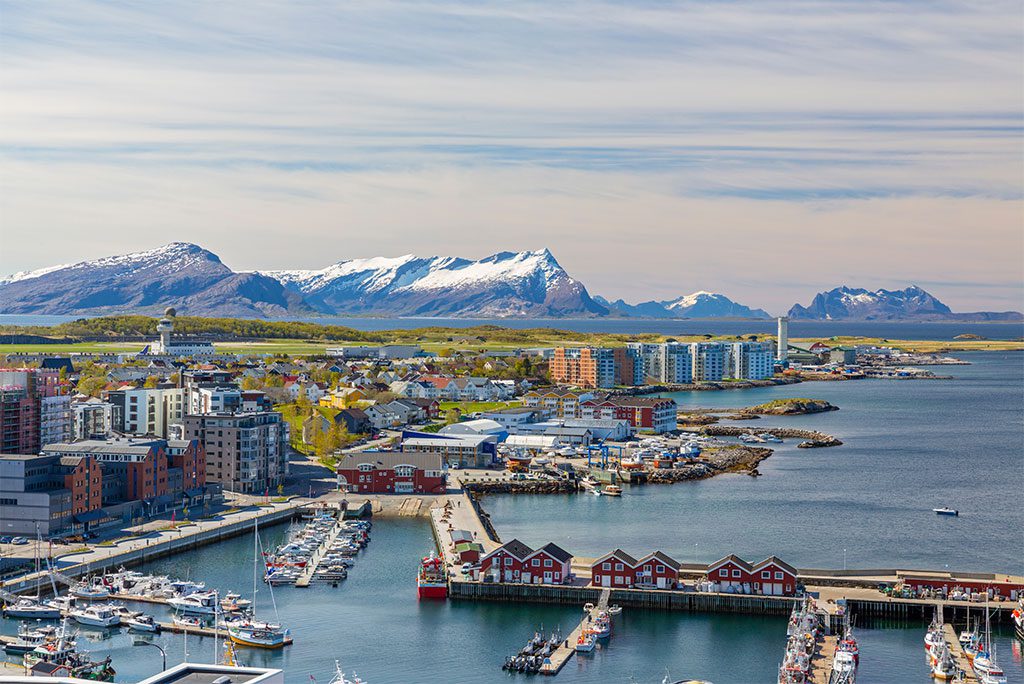
Bodo is situated on a prominent peninsula protruding into the Norwegian Sea, and the setting is breathtaking, with towering mountains rising in the background. It is one of the northernmost cities in the nation and a gateway to the Arctic, situated as it is at the end of the spectacular Kystriksveien Coastal Route.
The city itself doesn’t have much going for it other than a few churches and museums due to the fact that it was almost destroyed during WWII. Most tourists come to enjoy the region’s beautiful scenery and many options for outdoor activities.
For example, Svarthammarhola is home to the biggest cave in Scandanavia, and good hiking can be had in Keiservarden. You can spend your time fishing, cycling, or even climbing a glacier, and the beautiful Lofoten Islands are only a couple of hours away by ferry. In addition, many tourists go farther into the Arctic to investigate its wild and isolated snowy regions.
12. Jostedalsbreen National Park
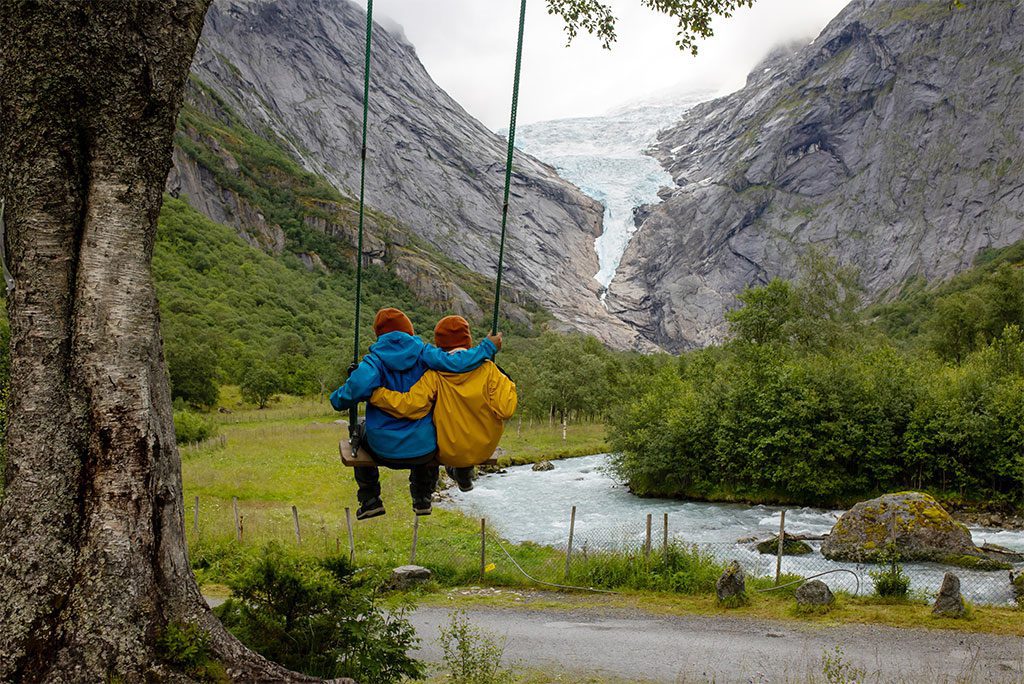
Jostedalsbreen National Park, in the west of Norway, is home to breathtaking natural beauty and takes its name from the massive glacier that can be seen there. The park was established in 1991, and it preserves a wide variety of ecosystems, including mountains, valleys, and glaciers.
Jostedalsbreen, the biggest glacier on the European continent, dominates its borders. This glittering glacier covers a large region and is, in some spots, nearly 600 meters thick. Because of the damage it has done to the surrounding area throughout the centuries and millennia, the national park is full of rocky landscapes, wide valleys, and stark mountains.
All three of the park’s entrances provide easy access to the beautiful scenery and have informative displays on the local flora and wildlife. Glacier hiking, as well as whitewater rafting and kayaking down one of the numerous rivers, are other activities that can be arranged.
11. Alesund
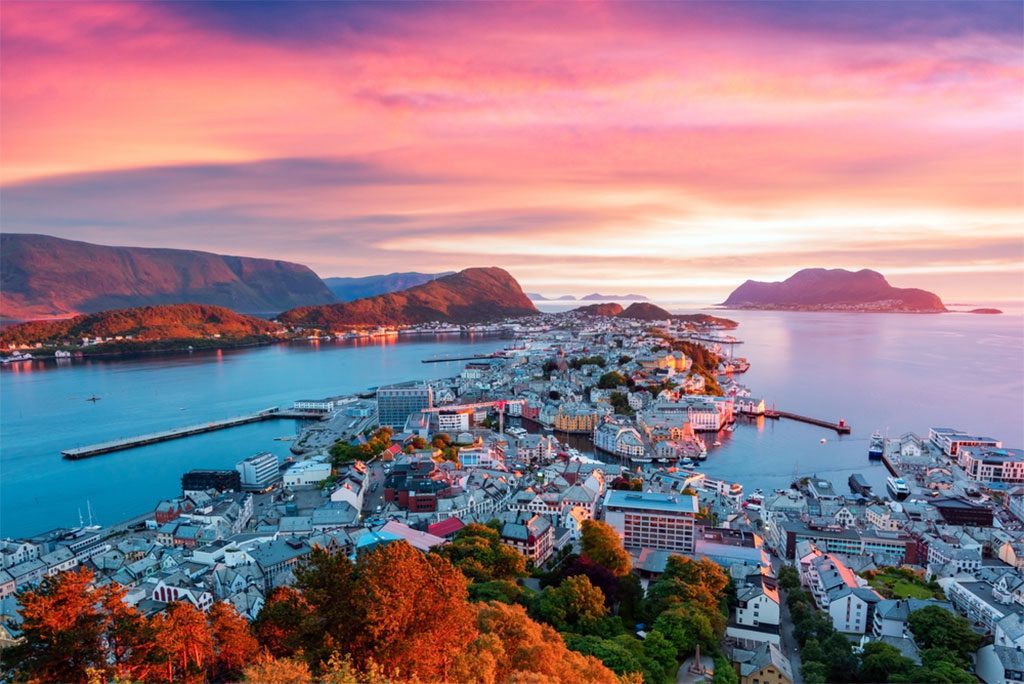
Alesund, on the western coast of Norway, serves as the entry point to the country’s most famous natural attractions, the fjords and mountains of the region’s interior. Alesund’s current scenic aspect is the result of city-wide rebuilding after a devastating fire in 1904. The city was reconstructed in its original form using stone and brick, and it now serves as a prime example of Jugendstil architecture, the Northern European equivalent of Art Nouveau.
At the Jugendstilsenteret, also known as the Art Nouveau Center, curious sightseers can find out more about the style. It is also recommended that you climb the 400 stairs to the Fjellstua viewpoint. Incredible panoramas of Alesund and the islands can be seen from the top of the mountain.
10. Tromso
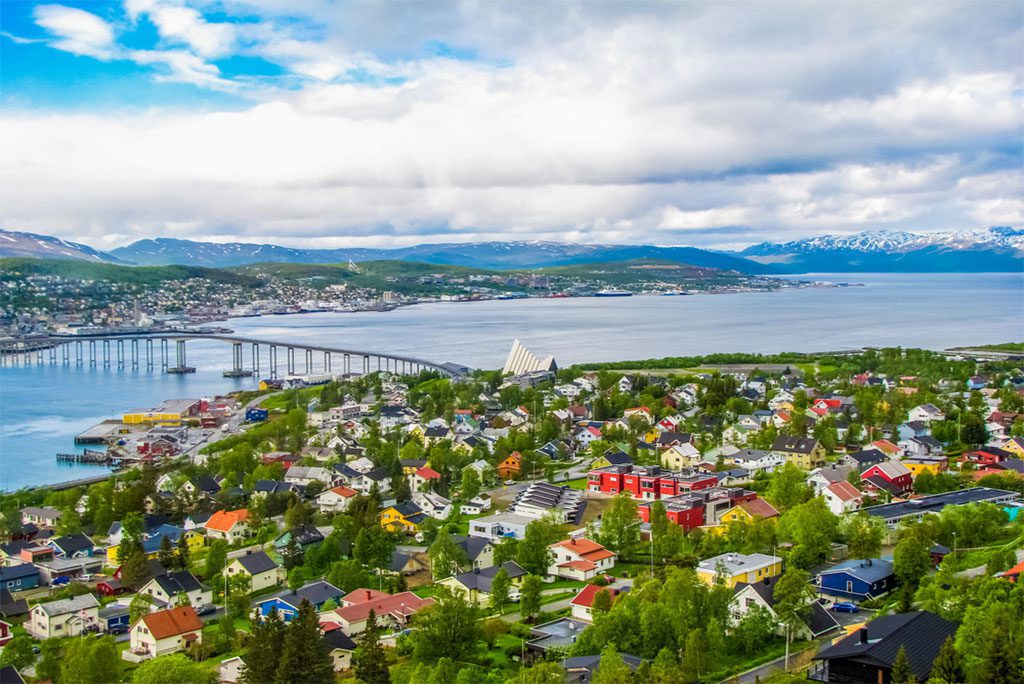
Tromso, the biggest city in Northern Norway, is well-known for its stunning natural scenery and its abundance of wooden houses dating back to the 18th century. The majority of Tromsoya’s population lives on the island, where sightseers can enjoy beautiful birch-tree forests and world-class museums. The Fjellheisen Cable Car ride up Storsteinen Mountain is a must for anybody interested in seeing breathtaking panoramas of the fjords and mountains in the area.
In this city situated 350 kilometers (217 miles) north of the Arctic Circle, visitors can enjoy such attractions as the Polaria Arctic Aquarium and the Polar Museum. One of the best sites to see the Northern Lights is in Tromso.
9. Trondheim

The city of Trondheim in Norway’s north has a wide variety of attractions. The third largest city in Norway was founded in 997 and served as the country’s capital during the Viking Age and the nation’s religious center throughout the Middle Ages. From Sverresborg, a rebuilt 12th-century castle, to the Nidaros Church, the northernmost medieval cathedral in the world, the city abounds with traces of the past.
The city of Trondheim serves as Norway’s cultural and musical epicenter. The Ringve Museum, the national museum of music, has displays of both traditional instruments and modern audio equipment. The Rockheim Museum, which opened to the public in 2010, is dedicated to showcasing contemporary music via exhibits and performances.
8. Oslo
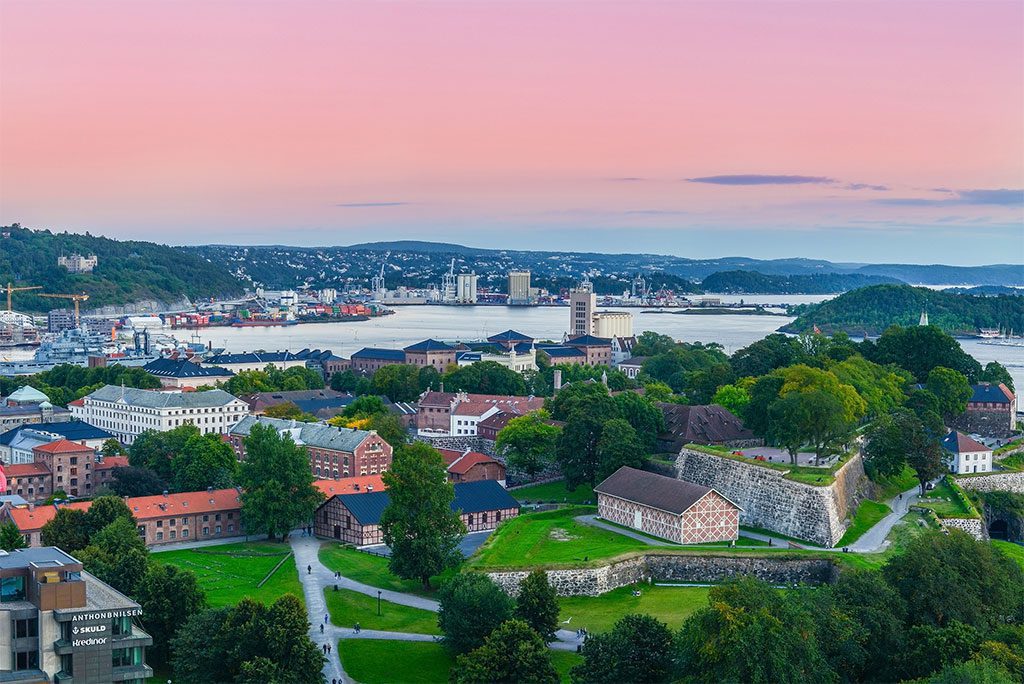
Norway’s capital, Oslo, is situated in a beautiful location at the end of the fjord known as Oslofjord, and there are other lakes and islands in the immediate vicinity. The city’s history extends back more than a thousand years, making it an important economic, cultural, and political hub.
In spite of the fact that the majority of the capital has been taken up by innovative and modern architecture, there are still pockets of old wooden houses. The city is home to several museums and galleries, including the interesting Viking Ship Museum, in addition to its active performing arts scene and jam-packed festival schedule.
The Folkemuseet, an outdoor museum with more than 150 historic buildings from all around Norway, including a stave church, is another popular Oslo site. The Munch Museum, which houses “The Scream” and other works by Edvard Munch, is still another. There are numerous places to go hiking and biking in and around Oslo, thanks to the city’s many parks and forests, and the islands in the Inner Oslofjord provide particularly breathtaking views.
7. Sognefjord
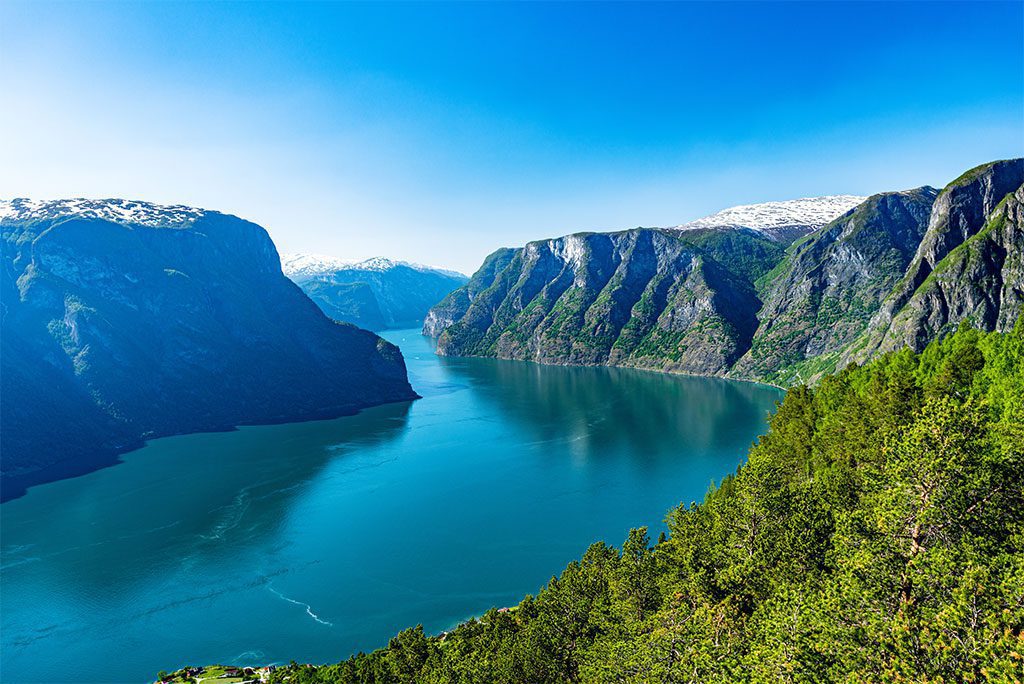
Sognefjord, located in Norway’s Vestland County, is the country’s biggest and deepest fjord, earning it the nickname “King of the Fjords.” It’s approximately 200 kilometers long, and it traverses the country from the North Sea to the Jotunheimen mountains in the west.
More coastline can be found in the fjord system than on the French and Italian Rivieras put together. Waterfalls, gorgeous meadows, and sleepy towns and villages dot its rugged landscape, which also has towering cliffs and expansive valleys. The fjord is 1308 meters deep at its deepest point; however, some of its branches are significantly shorter and wider. There are distinct landmarks and activities in each area.
While the natural beauty of the fjords is apparent wherever you go, Naeroyfjord is often cited as among the best. Jostedalsbreen, Europe’s biggest glacier, draws a lot of people, and the charming village of Gudvangen is also a big draw. In addition to the mountain passes and stunning vistas of Sognefjord, it is well worth your time to visit the centuries-old stave churches of Borgund, Unres, and Hopperstad.
6. Stavanger

Stavanger, the oil capital of Norway, is the fourth-largest city in the country and is located on the southwest coast. Because of the money generated by the thriving business, it is currently one of the world’s most expensive places to live and visit.
Stavanger has been a major settlement since Viking times, and it and its suburbs continue to expand. Beautiful wooden buildings line the city’s gorgeous waterfront, and the Gamle Stavanger neighborhood takes tourists back to 18th-century Scandinavia. Stavanger Cathedral, which dates back many centuries, and a number of museums showcasing the city’s artistic and archaeological heritage, as well as its marine and petroleum history, can also be found here.
In recent years, Stavanger has been a popular port of call for cruise ships. Its bars and restaurants see an influx of summer tourists. Fantastic opportunities for outdoor recreation, like climbing and surfing, can be found in the local mountains and beaches outside of the city.
5. Svalbard
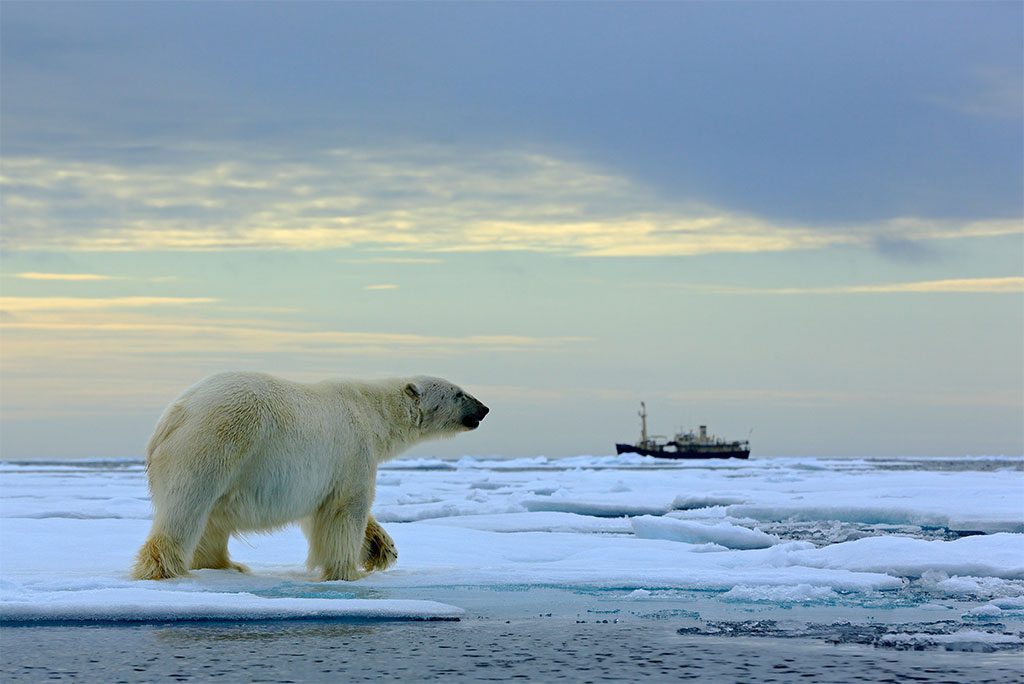
The islands that make up Svalbard can be found between the Arctic Ocean, the Barents Sea, the Greenland Sea, and the Norwegian Sea. Since 1920, the islands have been governed by Norway. Its settlements, farther north than anywhere in Alaska and all but a handful of Canada’s Arctic islands, are the world’s northernmost permanently inhabited places.
Permanent residents number less than 3,000, with almost all living in Spitsbergen’s two largest settlements, Longyearbyen and Barentsburg. Most tourists to Svalbard are looking for an authentic Arctic nature experience. Arctic bears, caribou, reindeer, polar foxes, whales, seals, and walruses are just some of the incredible animals that call these islands home.
4. Jotunheimen National Park
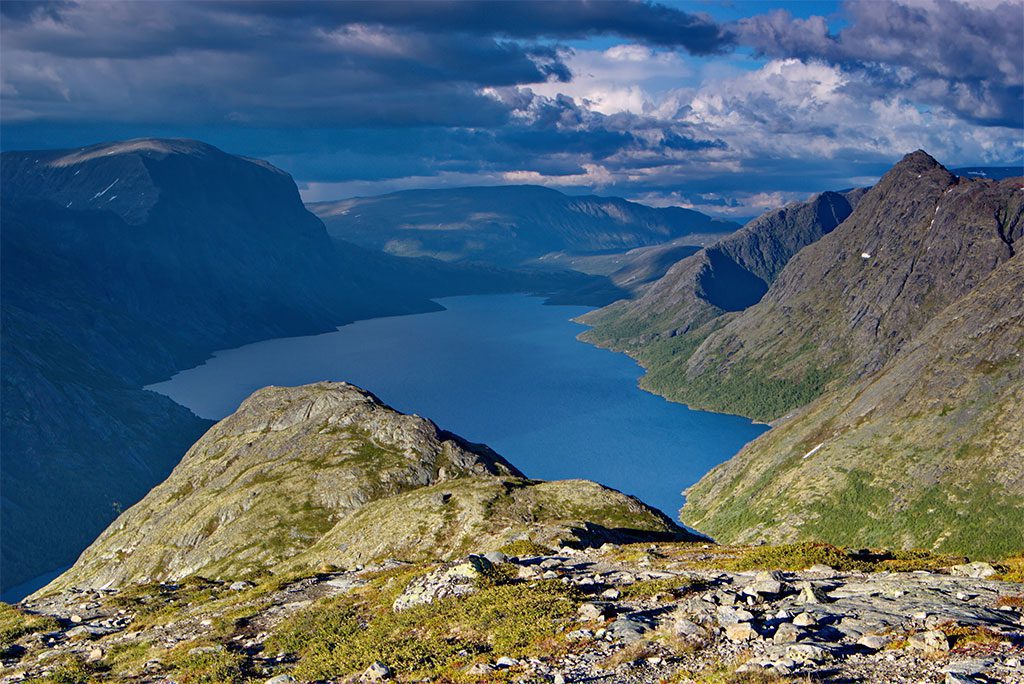
Covering a wide area of central Norway, Jotunheimen National Park features some of the most awe-inspiring views and scenery in the country. There are several mountain ranges here, and the area is appropriately dubbed “the Home of the Giants” for this very reason. The park is also home to Vettisfossen, which at 275 meters (900 feet) is the highest waterfall in Norway.
One of the most renowned alpine areas in Scandanavia, Jotunheimen is particularly popular with hikers and mountaineers, owing to its amazing natural beauty and variety of peaks. The park is home to numerous mountains that are above 2,000 meters in elevation, including the two highest in Northern Europe, Galdhoppigen and Glittertind.
The area’s mountain lodges and well-marked routes make activities like glacier hikes, summit tours, mountain climbing, and skiing easily accessible to tourists. Reindeer, elk, and even a wolverine have been observed in these parts, and you can also find emerald lakes and glittering glaciers tucked into its rolling slopes.
3. Bergen
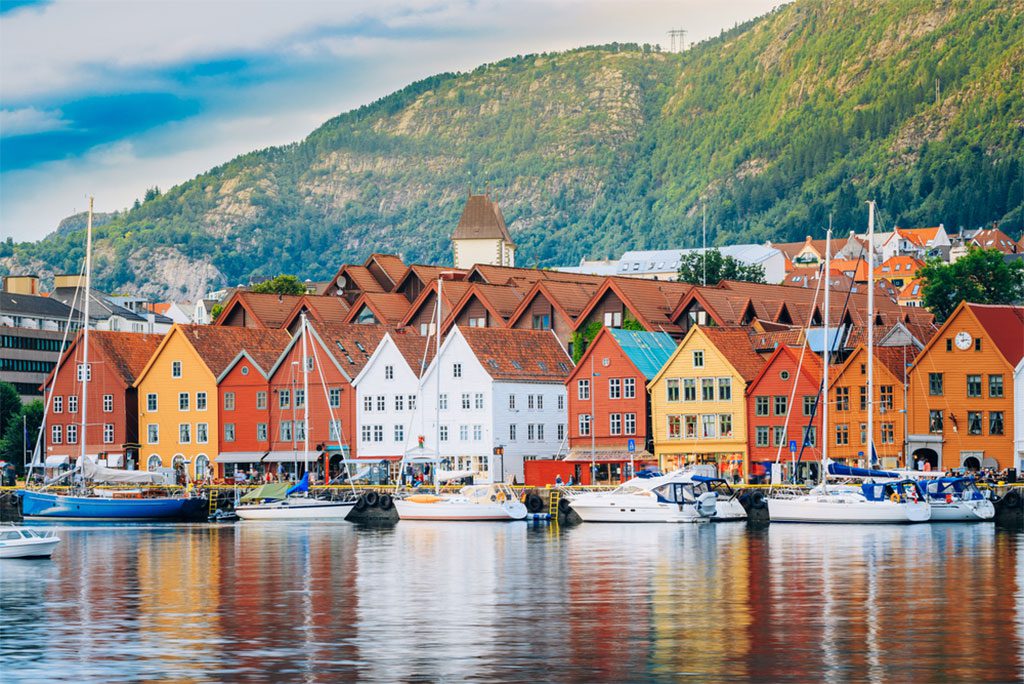
Set in a lovely place on the west coast of Norway, Bergen is surrounded by the majestic Seven Mountains, with various fjords and forests surrounding it. It is the country’s second-largest city and was formerly an important trading center and seaport as a member of the Hanseatic League.
The best spot to discover its seafaring history and legacy is at the magnificently preserved Bryggen, which stands on the eastern side of Vagen harbor. There are a few excellent museums, cafés, and bars, as well as the colorful wooden homes and warehouses of merchants. In addition to its famed, gorgeous waterfront, the city boasts an intriguing fortress for you to check out, as well as several magnificent medieval churches.
Bergen has a vibrant and young air attributable to its huge student population. Its vibrant bar and club scene is exciting, but the city’s beautiful natural surroundings are equally worth exploring on foot. You can quickly gain your bearings in the city renowned as the “Gateway to the Fjords” by taking a ride on the funicular.
2. Lofoten Islands
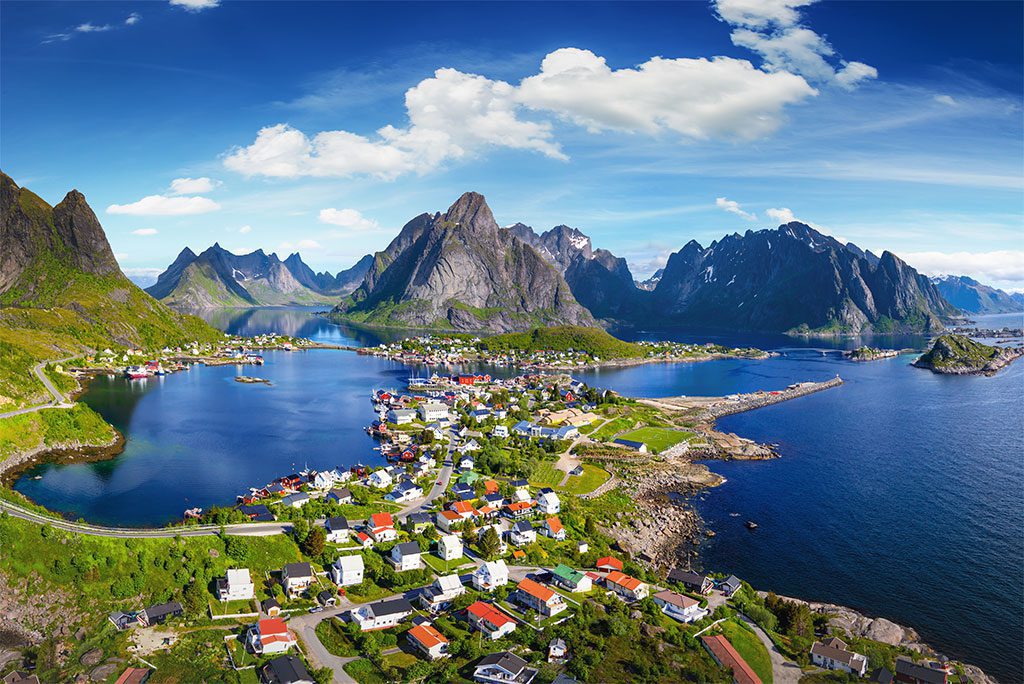
The Lofoten Islands, located off the coast of Norway’s northernmost tip, are well-known for their breathtaking natural beauty, thanks in large part to the jagged mountains that rise dramatically from the water. Secluded beaches, bays, and quiet fishing villages can be found amid its towering peaks.
The archipelago is linked to the main land by a network of bridges and tunnels, and it has gorgeous meadows, protected inlets, and dramatic fjords. Due to the abundance of marine life in the area, fishing has long been a significant source of income for the Lofoten Islands. Traditional fishermen’s cabins and tourist attractions like the Viking Museum and War Memorial Museum can be found in the area’s smaller villages and towns.
The Gulf Stream helps keep the temperature moderate even though the archipelago is situated above the Arctic Circle; it is almost the same latitude as Greenland. Though still a subarctic resort, summertime highs of 23 degrees Celsius are not unusual.
The islands are perfect for staring in astonishment at the Northern Lights and the surroundings. Aside from picturesque boat rides and whale watching tours, other popular activities include hiking, cycling, and rock climbing throughout its varied landscapes.
1. Geirangerfjord
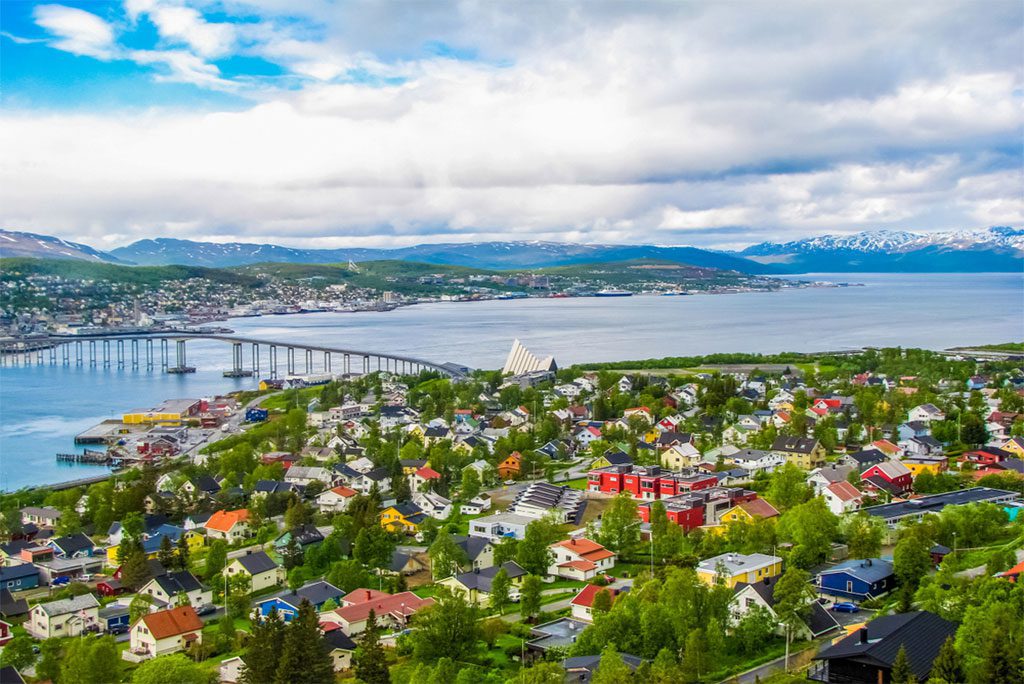
Geirangerfjord, in the west of Norway, in the Sunnmore region, is one of the most famous and frequently photographed fjords in all of Norway. A favorite among tourists for its stunning natural beauty, the area is home to towering cliffs, cascading waterfalls, and blue waters.
It’s a sizable fjord that’s 15 kilometers long and is located in the Storfjorden system, which is surrounded by towering mountains and sharp peaks. Suitor and Seven Sisters Falls are only two of the many beautiful waterfalls that cascade down its sheer walls. Geiranger and Hellesylt, two picturesque and remote villages, are at opposite ends of the fjord.
Many cruise ships and sightseeing tours go across the fjord during the warm summer months because of its breathtaking scenery. As enjoyable as it is to take in the sights from the comfort of the ship, visitors should not miss the opportunity to climb to the top of such notable peaks and plateaus as Dalsnibba and Ornesvingen, where they will be rewarded with breathtaking panoramas.



